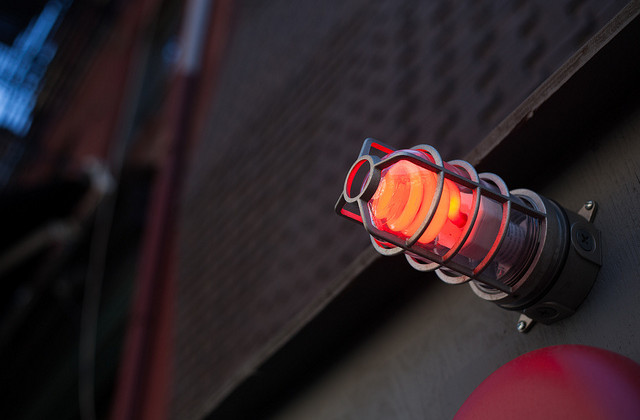CFL Bulbs and Mercury: What You Need to Know
Compact fluorescent light bulbs (CFLs) contain an average of 4 milligrams of mercury, about the amount that would cover the tip of a ballpoint pen. This is much less than the amount contained in those old mercury thermometers, or even the amount deemed safe to consume in our diet from fish, where mercury bioaccumulates and presents a danger if you eat too much. But make no mistake, mercury is a neurological toxin.
The EPA uses 0.1 micrograms per kilogram of body weight per day as the accepted exposure level for oral consumption without recognized adverse effects. Inhaling mercury vapor in significant amounts (greater than 0.025 mg/m3) can cause deficits in cognitive functioning, tremors, kidney damage and even death in cases of high exposure. If mercury is so toxic, why is it in a common household item?
When mercury vapor is stimulated by electrical current, it produces ultra-violet light. When this UV light bounces off the phosphor compound painted on the inside of a CFL, it converts to visible light and the bulb glows. Mercury is the most efficient element known – no other alternative can achieve comparable energy efficiency, making it an essential component of CFLs.

image courtesy of http://www.climatechange.gov.au/what-you-need-to-know/lighting/resources/fs.aspx
The Energy Independence and Security Act of 2007 set energy-efficiency standards for light bulbs that will come fully into effect by 2014. The law will require light bulbs to use 25-30 percent less power than incandescent bulbs use today – which means incandescent bulbs will be effectively phased out because they cannot meet these standards.
Currently over 670 million mercury-containing bulbs are discarded each year nationwide. Where do they all go? The EPA strongly encourages the recycling of all fluorescent light bulbs, but only requires it for certain commercial and industrial waste, relying on states to enforce residential recycling. The easiest recycling centers for residential and consumer access are typically home improvement/hardware stores such as Home Depot and Lowes (check out Earth911.com for recycling locations near you). Unfortunately, many people are not aware of the importance of recycling CFLs, and instead just toss them in the trash.
Virtually all components of a fluorescent bulb can be recycled – including the mercury. By recycling, you’ll ensure that 99.98 percent of the mercury used in the lamp is recovered. But even in a state such as Maine, with progressive laws that prohibit mercury disposal in landfills, the estimated recycling rate is still very low. A 2009 study found that 79 percent of those surveyed didn’t know that recycling was a requirement. Of those who did know, 17 percent still disposed of CFLs in the trash.
As CFL use becomes more widespread due to federal regulations, it’s important that the general public is educated on the dangers of bulb breakage, safe cleanup, and proper disposal for spent bulbs. About 11 percent of the mercury vapor inside CFLs is released if the bulb is broken. If sent to a landfill, mercury leaches into the soil and groundwater, or is incinerated into the air. If broken inside your home, mercury can contaminate your carpet and vaporize into the air. The EPA has detailed instructions for what to do – and what not to do – in case of a ‘mercury spill’ (i.e. CFL breakage) inside your home. But unless the bulb breaks in a tiny closet, with you inside, and the door shut – the vapor should dissipate enough over time that inhalation isn’t a serious threat. Opening windows and vacating the room and/or building is the best way to ensure you aren’t breathing in significant concentrations of vapors.
While the amount of mercury in one CFL may be negligible compared to other sources of mercury we encounter, we must still consider the impact on the environment. Some argue that even in the worst-case scenario, the mercury added to the environment if every CFL bulb was incinerated would add only 0.12 percent to annual manmade mercury emissions in the U.S. But considering the fact that current emissions are already significantly high enough to cause a public health risk via the food chain (think mercury-laden fish) then perhaps even a 0.12 percent reduction is worth the effort to educate the public and divert CFLs from the landfill.
Some potential solutions to CFLs-in-landfills are tougher regulations at the state or federal level to require recycling, better product labeling, and manufacturing standards that limit the amount of mercury used, as is already done in the U.K. Do you recycle your CFLs? Why or why not?


